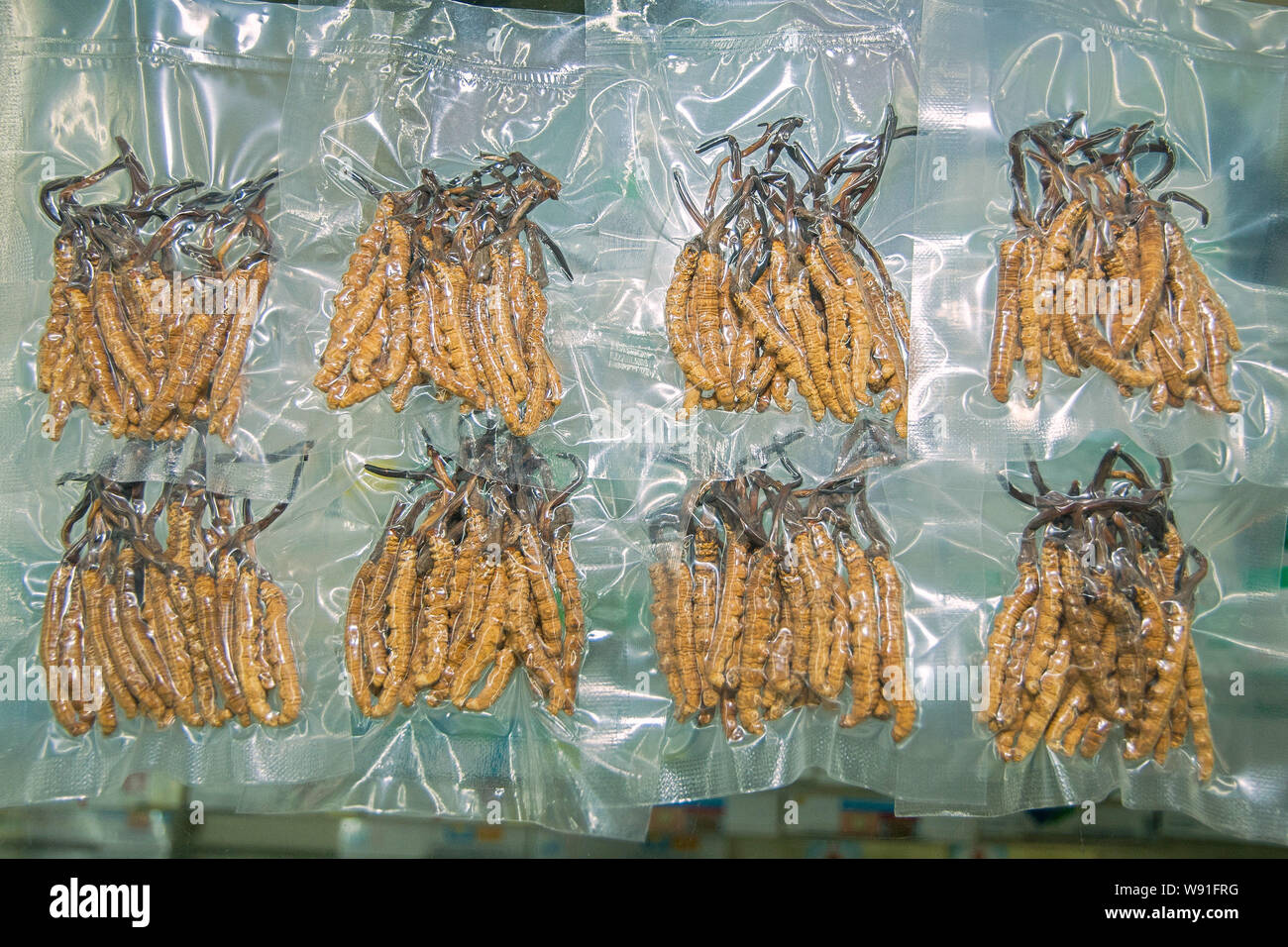--FILE--Parasitic fungus, Cordyceps sinensis, is for sale at a TCM (traditional Chinese medicine) wholesale market in Shenzhen city, south Chinas guan

Image details
Contributor:
Imaginechina Limited / Alamy Stock PhotoImage ID:
W91FRGFile size:
17.2 MB (1.5 MB Compressed download)Releases:
Model - no | Property - noDo I need a release?Dimensions:
3000 x 2000 px | 25.4 x 16.9 cm | 10 x 6.7 inches | 300dpiDate taken:
3 September 2013Photographer:
ImaginechinaMore information:
--FILE--Parasitic fungus, Cordyceps sinensis, is for sale at a TCM (traditional Chinese medicine) wholesale market in Shenzhen city, south Chinas guangdong province, 3 September 2013. In a dirty, dimly-lit room in a backstreet of one of Chinas poorest rural towns, a trader combs his leathery fingers through a US$17, 000 bag of caterpillar fungus, lamenting the curse that its value has wrought. The parasitic fungus, Cordyceps sinensis to science, only exists high on the Tibetan plateau, where it grows through the body of its host, the ghost moth caterpillar, killing it and bursting out of the top of its head. What looks like a small brown twig on the end of a crinkled yellow worm is for its believers a lifesaver, a cure for cancer and a potent aphrodisiac sometimes known as Himalayan Viagra. For those who toil on hands and knees to collect it, it can mean death. It has a potent status in traditional Chinese medicine, making it almost worth its weight in gold.